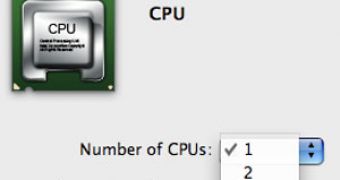With VMware taking huge chunks of the virtualization-solution marketplace, Parallels needs to act fast, and the company knows it. Therefore, a pre-release build of Parallels Desktop 4 embodies support for dual-core Intel Macs, and, most importantly, enables virtualization of Mac OS X Server on machines already running Mac OS X, those familiar with the software say.
Parallels Desktop is a software application developed by the folks at Parallels Inc, who have dedicated themselves to making desktop and server virtualization solutions. Released on June 15, 2006, Parallels Desktop for Mac was the first software suite to bring hardware virtualization mainstream to Intel Macintosh computers.
AppleInsider brings exciting new details regarding the latest development on Parallels Desktop 4.0, which aims to make good on early promises of enabling OS X Sever virtualization. This would imply changing the licensing terms for Leopard. While such features have been the epicenter of IT administrators' earliest hopes and dreams, Linux and Windows have had a head start. However, Parallels plans to do even “more than meets the eye” with version 4.0 of Parallels Desktop.
Under its revamped user interface, Parallels 4 will “also make a bid to challenge Fusion 2.0 in performance category,” AppleInsider reports, citing people familiar with the software. Among the enhancements mentioned are a tweaked virtualization engine, which should speed up all actions, but also full power management with ACPI (advanced configuration and power interface), which should allow “smoother shut downs and suspensions of the virtual machine,” the site notes.
The long-awaited support for assigning two CPU cores is also mentioned as listed in the changelog, as is support for assigning up to 8GB of RAM to one virtual machine. Lastly, early betas of the software are said to have already included support for DirectX 9 and OpenGL 2.

 14 DAY TRIAL //
14 DAY TRIAL //